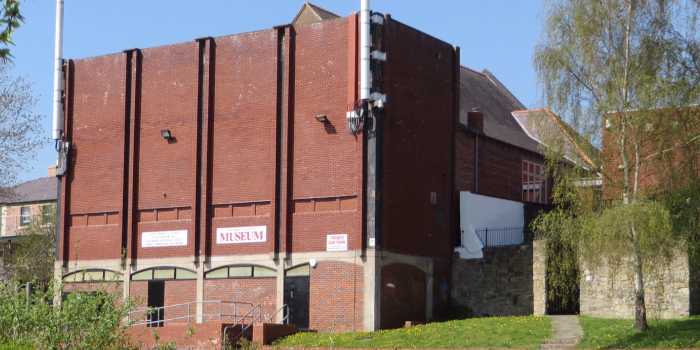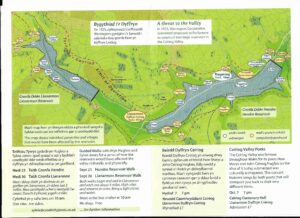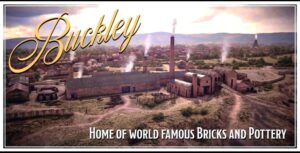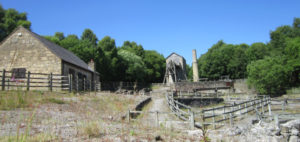Cefn Mawr Community Museum was opened on Friday 28 November 2014 by Ken Skates AM, Deputy Minister for Culture, Sport and Tourism, and is a partnership between Cefn Mawr Historical Society and Cefn Mawr Community Council.
The Museum evolved from the custom that members of the Historical Society would bring items to their regular monthly meetings for discussion. The Council then generously offered the Society an unused room, known as the Waterloo Room, in the George Edwards Hall.
For centuries, the life of Cefn has been dominated by industries, first stone quarrying and coal-mining, then the manufacture of iron, then the production of bricks and tiles through firms like J C Edwards, and, in the 20th Century, the chemical industry, first Graesser’s and then Monsanto. All this has gone – Cefn’s life is no longer dominated by industry. For a while it’s been a community trying to recover its identity and purpose.
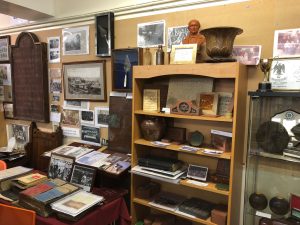
At Cefn Museum, we are already exploring ways of celebrating our community’s past, as a means of transforming its present. Initially, we were given a two-year licence, as nobody was sure that this experiment would work. When the two years were up, we were given an extension of five years, reflecting the success that the Museum has turned out to be. We open every Monday, Wednesday and Friday from 1000-1230, and on the second Saturday during the Spring and Summer months. Admission is free.
When we first accessed the Museum’s room in September 2014, our initial thought was: how on earth are we going to fill the space? By the time we opened in November 2014, we were beginning to ask where we going to put all the objects and photos and documents that we had been given. Most of the exhibits on display are either donated or on loan from members of the local community in Cefn Mawr and the wider area. The Museum contains various sections, each of which focuses on an aspect of community life: Village Life, Industry, Transport, the Canal and the River Dee, War Memorabilia, Churches and Chapels, Sport, Music and Art. As well as offering a good collecti
on of artefacts, photos and documents, the Museum also has audio-visual facilities to play videos and music related to the life of the community and its people. Our community coverage is Cefn Mawr village, along with its neighbouring communities of Rhosymedre, Acrefair, Trevor, Newbridge and Froncysyllte.
In addition to our permanent displays, we also have a programme of special exhibitions, designed to run for three or four months each. These give us the opportunity to highlight one particular area of our Museum holdings or to loan artefacts and documents from outside the Museum collection. In recent months we have covered topics such as the J C Edwards Brickworks, the Llangollen International Musical Eisteddfod, and the 180th Anniversary of St John’s Church, Rhosymedre, as well an exhibition called ‘A Woman’s Place is in the Kitchen’, reflecting on domestic life during the 20th Century. In each of these special events we try to includ
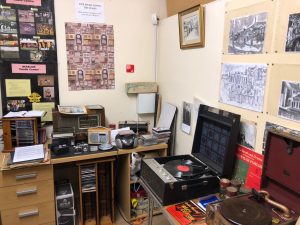
e a video or PowerPoint display to give a focus to the contents on show.
The only room in the Museum apart from our main space has become known as the Music and Art room. Here we display some artwork by local artists, tell the story of local choirs and the operatic society. The celebrated Fron Choir have given us some material, but Cefn was the home to a variety of male-voice and mixed-voice choirs, as well as school choirs. There was even at one time a Monsanto Mixed-Voice Choir, of which we have a few old 78 recordings!
We also have a permanent exhibition on the ways in which we have listened to music over the years: we have everything from early phonograph cylinders, a wind-up gramophone, a crystal set and a reel-to-reel tape recorder, to contemporary digital players. Though much of the material is local, this section is more about a universal experience of listening to music within the locality.
We also have a policy of playing music in the Museum, something that not every Museum would do. The music we play is either of local origin or relevant to the Museum’s main timeline, the 20th Century. So we have CDs of Music While You Work and hit tunes from the 30s, 40s and 50s.
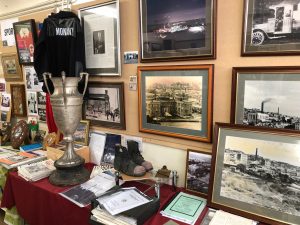
As well as those visitors who turn up day by day, we’ve begun to receive parties of visitors from within the community – several local schools have been in, and a cub pack. Children’s reactions to the Museum are very positive. For them it’s both familiar in that it’s about their area, but strange in that it’s full of objects that their grandparents know about but look odd. One lad, seeing an old 12″ 78 record, said, ‘That’s a large DVD’! But they love being there, promise to come again and bring their Mums and Dads.
In return we go out into the community, taking what we call a ‘Museum in a Box’ with a selection of objects, photos and documents to care homes, schools and community groups, as well as playing them appropriate music. We’ve recently been asked to speak to groups of people living with dementia, as encountering old, familiar objects and photos is of great benefit to them.
We have found Facebook hugely important in keeping in contact with people in the community and beyond. This year we’ve also managed to set up a website. One of the uses we make of both Facebook and the website is to present an Object of the Week, telling people what we’ve got in a easily digestible way.
Starting and running a Museum has been an enriching experience for those of us who are volunteers. The magic of the Museum is that people come in, see what we’ve got, and they begin to talk – about their homes and families, about their working lives and their experiences. One thing we really need to get under way is an Oral History Project, because Cefn is rich in memories and experience of life.
We’ve just begun our fourth year as a Community Museum – opportunities that we never dreamed of in the beginning have come our way, and we hope to build on this foundation experience in the coming years.
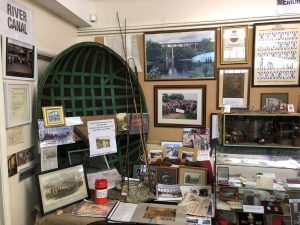
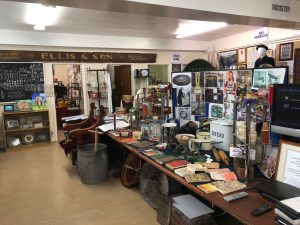
Blog articles will only appear in the language they are provided in by the author.
Yn yr iaith y’u hysgrifennwyd gan yr awdur yn unig y bydd yr erthyglau blog yn ymddangos.

